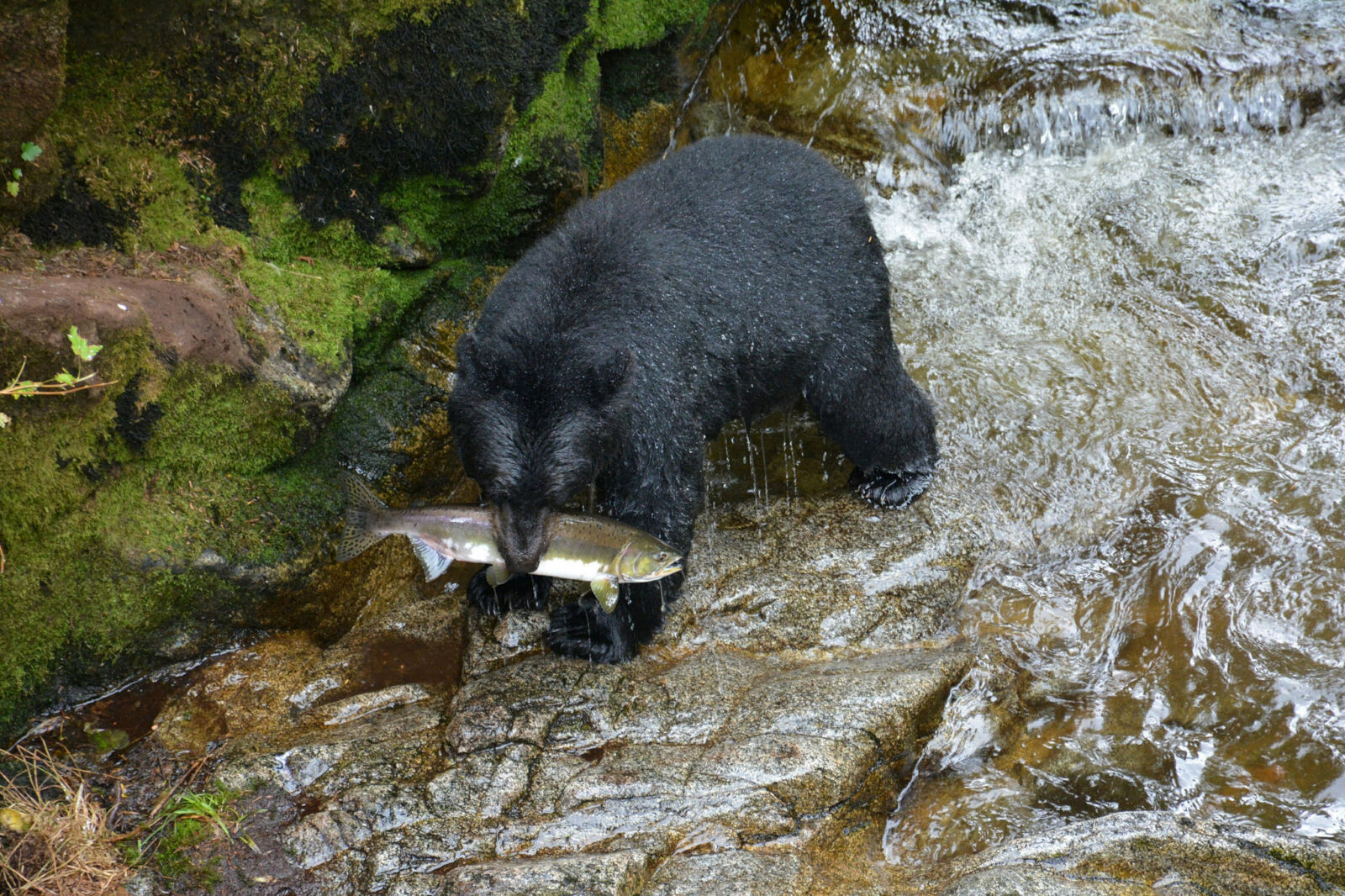Animals have developed many strategies to survive the winter, a time when food and water are scarce. Some migrate to areas less effected by cold, some resist or adapt to withstand the effect of winter events, growing a thicker coat of fur for example. The snowshoe hare takes it even further, their thicker winter coat matches the color of snow, an adaptation known as camouflage. Other animals settle in for a long winters nap.
When we think about strategies animals use to survive the winter, we often picture birds flying south and bears hibernating in caves. However, not many animals truly hibernate, and bears are among those that do not. Bears enter a lighter state of sleep called torpor.
Hibernation is a voluntary state an animal enters to conserve energy, when food is scarce, and minimize exposure to the winter elements. During hibernation an animal lowers its body temperature, slows its breathing rate, heart rate, and metabolic rate-the rate its body uses energy. Hibernation can last days, weeks, or months depending upon the species. Chipmunks reduce their heart rate from the usual 350 beats per minute to an almost undetectable 4 beats per minute during hibernation. Chipmunks do not sleep through the entire winter however, they wake every few days to feed on stored food and to urinate and defecate.

Hibernation is triggered by decreasing day length and hormonal changes in an animal that dictate the need to conserve energy. Before hibernating, animals generally store fat to help them survive the winter. Many, like the chipmunk, wake up for brief periods, but for the most part, true hibernators remain in this low-energy state through the winter. Waking takes time and uses up an animal's energy reserve.
Many animals once thought to hibernate, including bears, really only enter a lighter sleep-state called torpor. Like hibernation, torpor is a survival tactic used by animals to survive the winter months, and is triggered by colder temperatures and decreased food availability. Torpor also involves decreased breathing and heart rates, and lower metabolic rate. A bear’s body temperature reduces slightly. Bears can sleep more than 100 days without eating, drinking, or passing waste! Bears can actually turn their pee into protein.
Unlike hibernation, torpor is not voluntary and often lasts for shorter periods of time. During their active period of the day, animals in torpor maintain a normal body temperature, breathing and heart rate. But while they are inactive, they enter into a deeper than normal sleep that allows them to conserve energy and survive the winter.

The main difference between hibernation and torpor is during torpor, the animal is able to wake up quickly to avoid danger, or if the opportunity exists exit the den to feed. Waking expends energy and involves violent shaking and muscle contractions, much like shivering. The energy lost is offset by how much energy is saved in the torpid state. Females bears awaken from torpor to give birth.
Whether an animal hibernates or enters torpor has a lot to do with the size of the animal, smaller animals tend to hibernate and larger animals tend toward torpor.
Animals that are true hibernators include rodents like chipmunks, deer mice, woodchucks and ground squirrels. Bees, snakes and some bats are also hibernators. Bears, raccoons, and skunks are all "light hibernators" that use torpor to survive the winter.
Bison, bears, bats…you name it, and forests have it. We hope you enjoyed this blog and that you’ll explore the other fascinating wildlife topics here. Just as the wildlife we all cherish depends on healthy habitat, the NFF depends on support from generous, involved individuals like you! Please click here to make a much-needed unrestricted gift today. On behalf of the bison, bears, bats, and countless more creatures, thank you!

